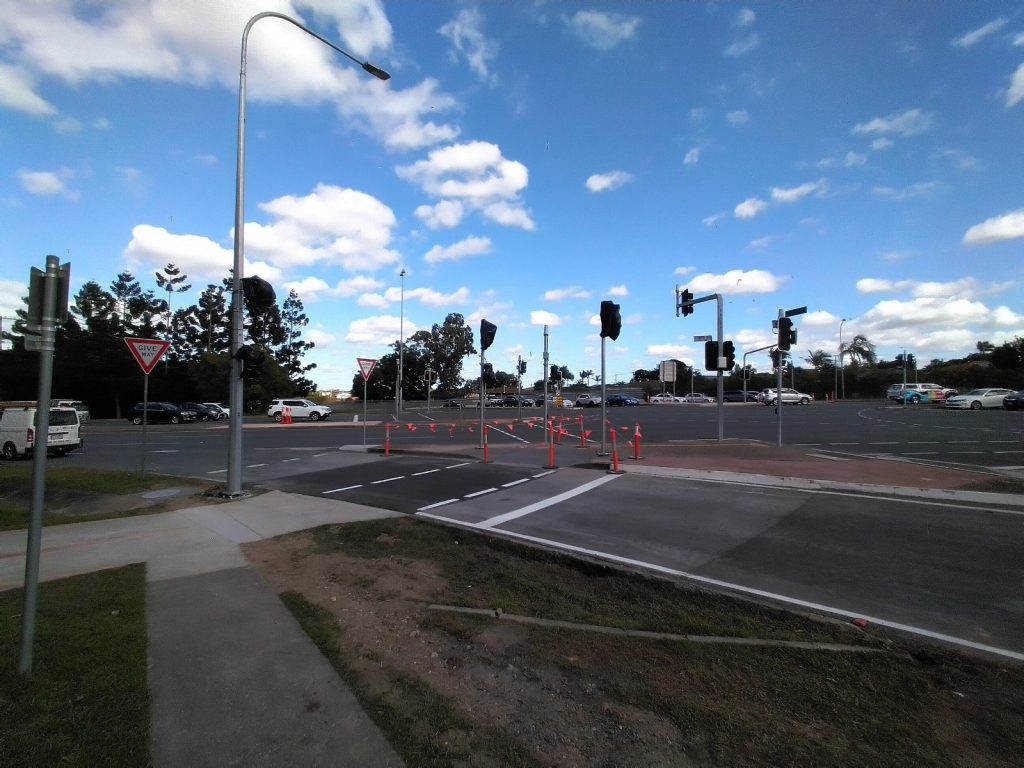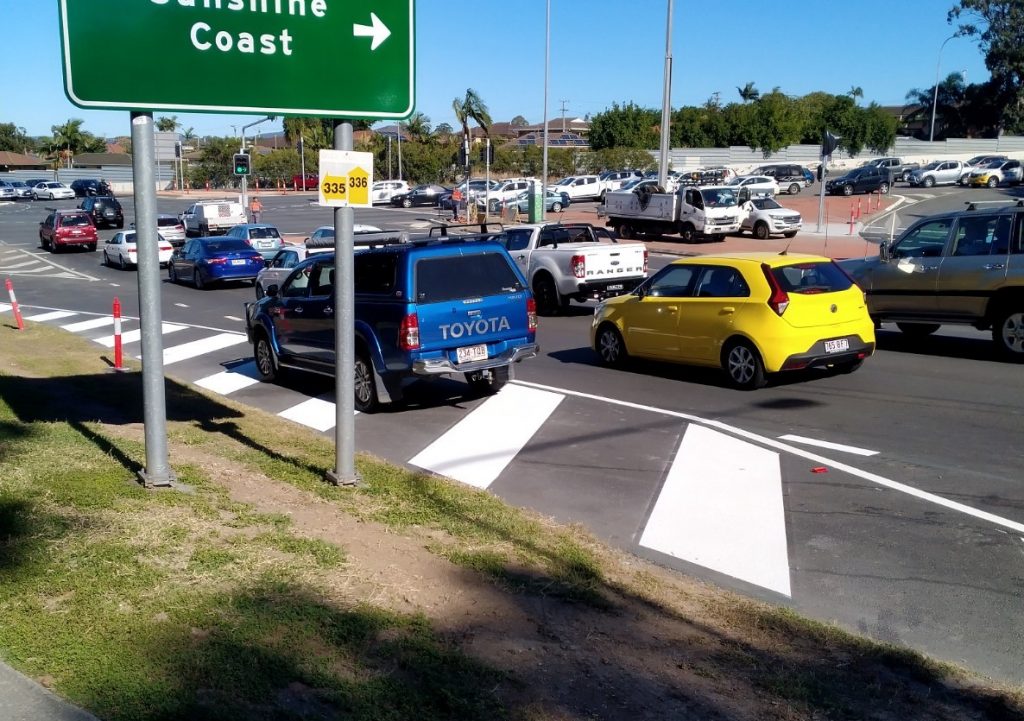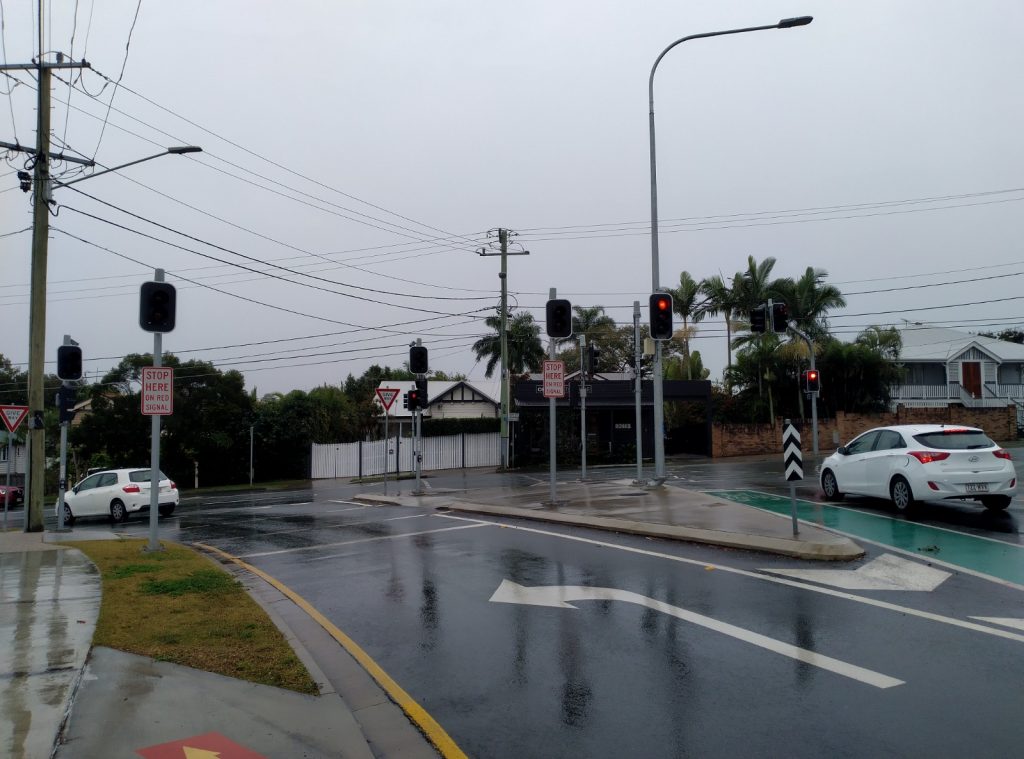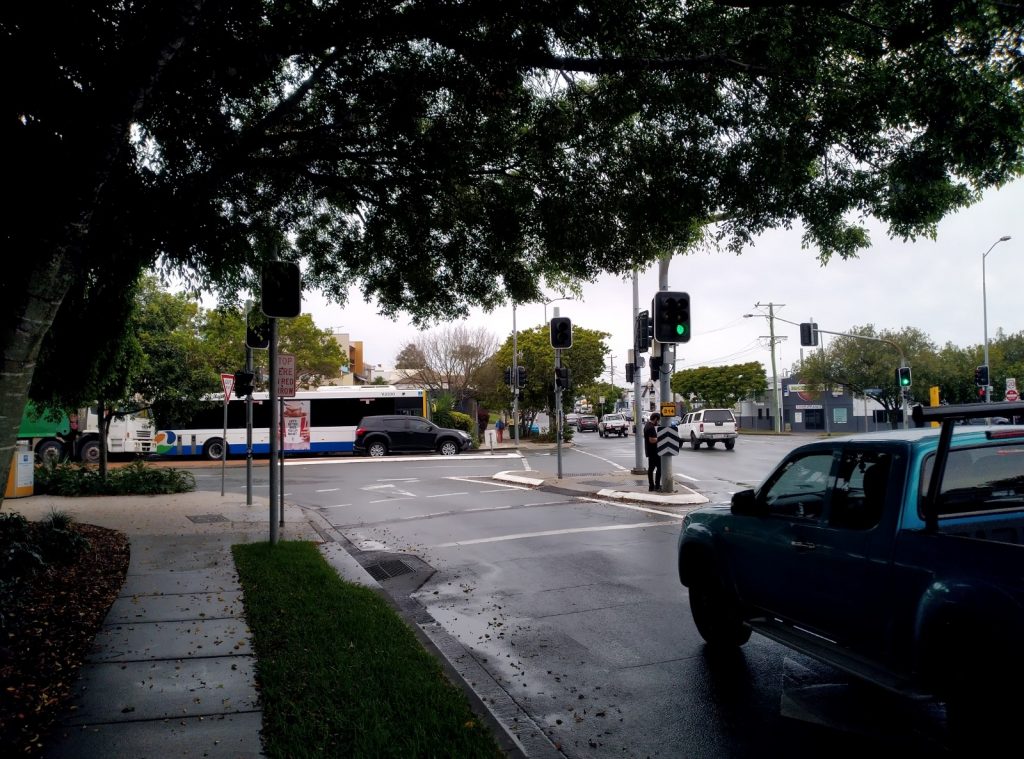Having seen the slip lanes at South Brisbane, this morning I decided to go and check out two other signalised slip lanes I’m aware of – one at the Grange and one at Sandgate.
The signalised slip lane at Days Road was built in 2018 when the roundabout was replaced. While I was impressed that there are pedestrian crossings on all three legs of the intersection, the slip lane signals are – surprise! – synchronised with the main traffic lights. I timed a maximum pedestrian wait at the slip lane of 45 seconds.
The slip lane from Rainbow Street to Bowser Parade in Sandgate is certainly the oldest signalised slip in Brisbane that I know of, dating from around 2007. This slip lane is opposite Sandgate Station and sees significantly more pedestrian traffic than Days Road does. It is – of course – also synchronised to the main traffic lights, and I timed a maximum wait of 85 seconds. While timing I saw several pedestrians cross the slip lane, none waiting for the lights, and some running to catch the main crosswalk phase across to the station. I also, amusingly, watched a car sit and wait at the blank slip lane lights for an entire cycle, because the driver didn’t understand what the unlit signals meant.
Even if the engineers who design these slip lanes, and the politicians who sign off on them, genuinely believe they are safe, surely they must be aware that a long waiting time eliminates any chance of pedestrian compliance? I have been wondering why the Brisbane City Council synchronises their slip lane lights in this way, and the only theory I can come up with is that they’ve determined that driver behaviour makes it dangerous to allow the slip lane signals to change independently.
At all other intersections in Queensland, a yellow arrow signal only ever appears immediately after a green arrow at the end of a protected turn phase, when all conflicting traffic is being held by red lights. Therefore, most drivers interpret a yellow arrow as “the way is clear; hurry up before the light changes.” If this logic were applied at a slip lane, where the turn is permissive rather than protected, a driver hurrying through without paying attention could well collide with traffic on the cross road – if the signals were not synchronised to ensure a gap. I’ve put that theory to TMR, and asked if it was considered at Webster Road, but haven’t heard back yet.
As for the Webster Road intersection, the work there is almost complete:


But that doesn’t mean my campaign has failed, or should come to an end.
Despite being demonstrably dangerous and anti-pedestrian, signalised slip lanes are becoming a de facto standard in Queensland, based on nothing more than wishful thinking that a safe alternative to slip lane removal exists. But it doesn’t.
And not only are these signals dangerous, but they’re expensive – about $250,000 per slip lane. That means hundreds of millions of dollars in public money could potentially be spent on a slip lane treatment that is no better, and quite possibly worse, than the known-unsafe treatments they replace. And that’s something worth trying to wake TMR up to.
-David
PS: Here is TMR’s official response to my first letter, and my follow-up sent on Monday:

